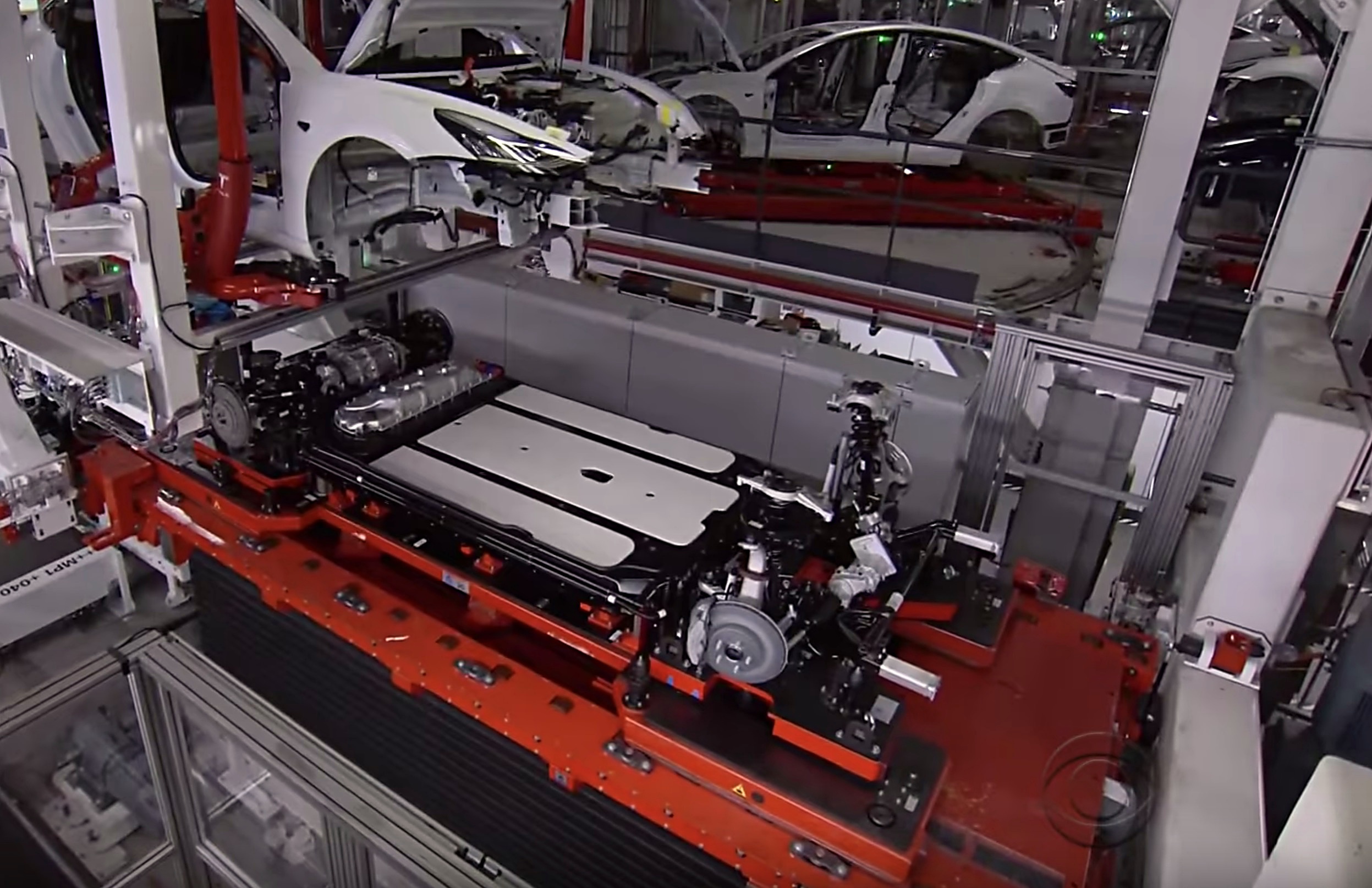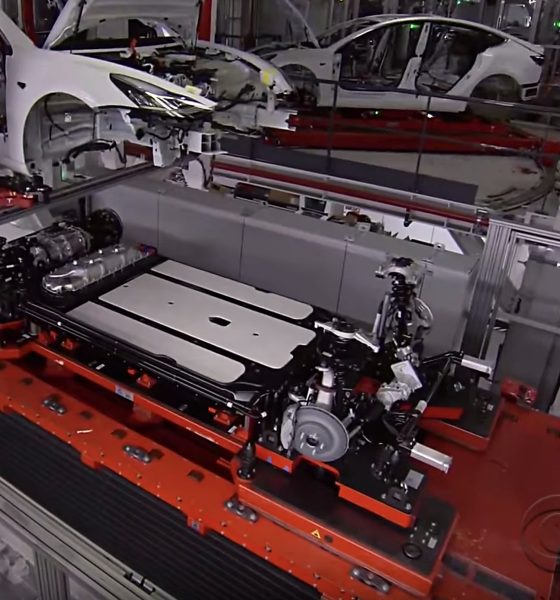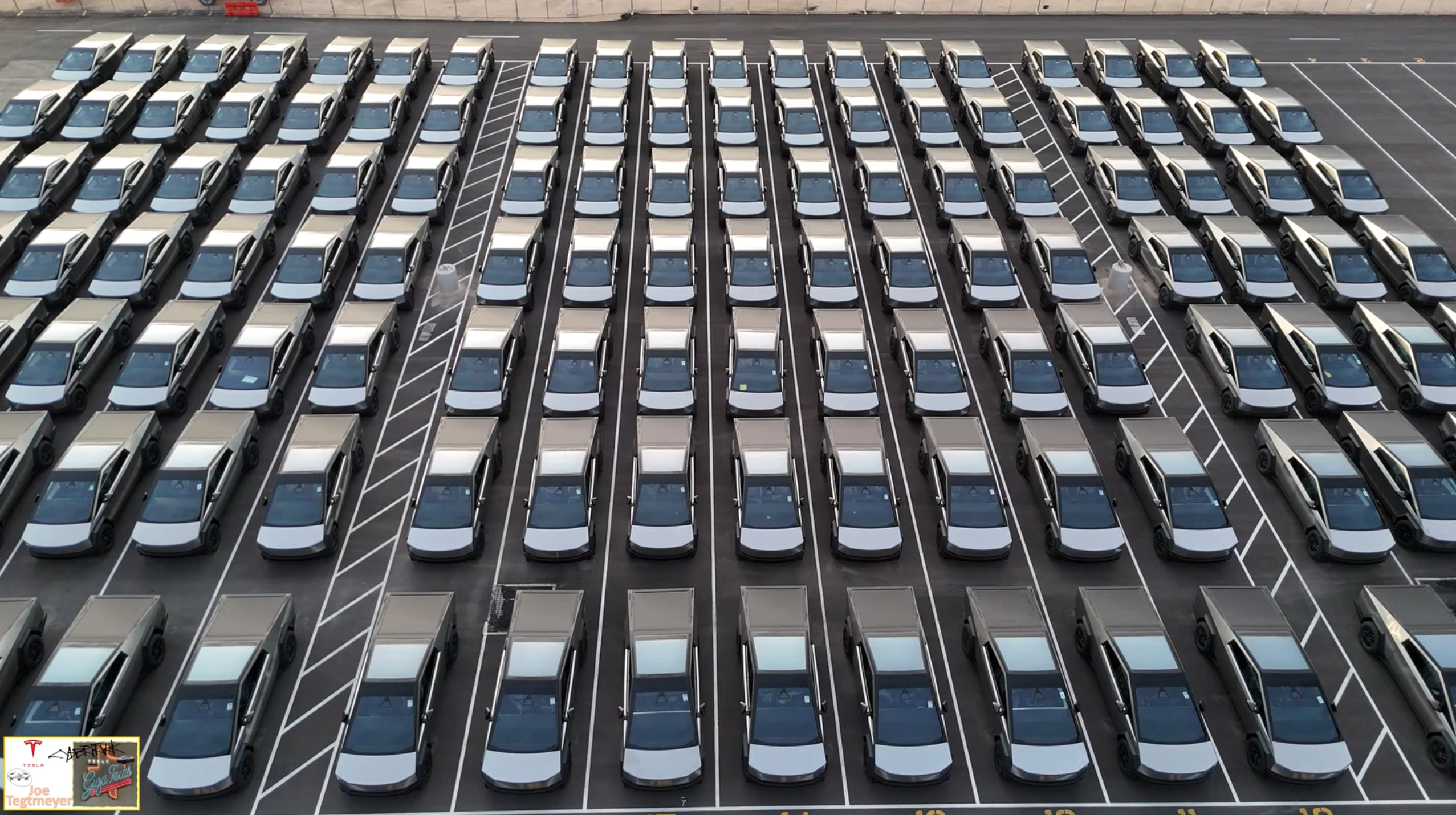

Investor's Corner
German teardown firm gives insight on Tesla Model 3 materials cost and battery composition
A German teardown company has stated that Tesla could make a profit with the Model 3. Speaking with German news agency WirtschaftsWoche, an engineer from the teardown firm stated that after analyzing and studying the vehicle, they concluded that the materials used in the Model 3 cost around $18,000 per vehicle.
The Model 3 has a base price of $35,000 for the standard range, RWD version. Currently, the premium variant of the compact electric car, the Model 3 Performance, is offered at $78,000 with all options except Autopilot. In a statement to WirtschaftsWoche, the engineer from the teardown firm stated that the Model 3 could ultimately contribute positively to Tesla’s earnings.
“If Tesla manages to build the planned 10,000 pieces a week, the Model 3 will deliver a significant positive contribution to earnings,” the engineer said.
Also notable were the conclusions of the German company about the Model 3’s battery pack. Laboratory results shared with WirtschaftsWoche noted that Tesla’s 2170 cells for the Model 3 consisted of 2.8% cobalt, 65% less than the industry average of 8%. Sven Bauer, Managing Director of Batterien-Montage-Zentrum (BMZ), one of Germany’s largest independent battery producers, stated that Tesla’s reduction in cobalt use can give the company a competitive advantage.
“That would be a significant competitive advantage for Tesla. Cobalt is currently very difficult to get on the world market,” Bauer said.
Tesla’s progress in its battery tech were highlighted in a recent report from advisory firm Benchmark Mineral Intelligence. According to BMI, Tesla has used less cobalt in its batteries since the days of the original Roadster and the Model S. With the Model S, for example, Tesla used up 11 kg of cobalt per car. Tesla is using 4.5 kg of cobalt for the Model 3, a 60% reduction.
Tesla’s improvements showcased in the Model 3’s 2170 battery cells were discussed during the company’s Q1 2018 Update Letter. According to the letter, the cobalt content of the company’s Nickel-Cobalt-Aluminum cathode chemistry is “already lower than next-generation cathodes that will be made by other cell producers with a Nickel-Manganese-Cobalt ratio of 8:1:1.” Such a ratio has not been attained by any competitor in the market so far.

The evolution of Tesla’s cobalt use over time. [Credit: Benchmark Mineral Intelligence]
The observations of the German firms about Tesla’s battery tech in the Model 3 echo the findings of Detroit veteran Sandy Munro, whose company, Munro & Associates, is also in the process of tearing down and analyzing the compact electric car. In a recent episode of Autoline After Hours on YouTube, Munro stated that the Model 3’s battery is the best in the industry today. Munro was particularly impressed with the .2-milliamp differential between the Model 3’s battery modules, stating that “nobody (in the industry) can balance batteries that close.”
Back in January, photographs emerged in the Tesla community showing the Model 3 being air-freighted to Germany. References to Stuttgart, which is where Porsche and Mercedes-Benz are based, were visible in the pictures. The German companies reportedly paid up to $230,000 for every Model 3 that they acquired.
Confirmation that German companies were analyzing the Tesla Model 3 came in February, when Georg Kacher, a journalist for German news agency Süddeutsche Zeitung, published an article stating that a “major German car company” was able to acquire a Model 3 for testing and analysis. According to Kacher’s report, the German company was surprised and impressed by the Model 3’s minimalistic design, especially in the vehicle’s interior, which was dubbed as “reminiscent of a completely cleared, black-washed Bauhaus living room.”

Investor's Corner
Tesla analyst realizes one big thing about the stock: deliveries are losing importance

Tesla analyst Dan Levy of Barclays realized one big thing about the stock moving into 2026: vehicle deliveries are losing importance.
As a new era of Tesla seems to be on the horizon, the concern about vehicle deliveries and annual growth seems to be fading, at least according to many investors.
Even CEO Elon Musk has implied at times that the automotive side, as a whole, will only make up a small percentage of Tesla’s total valuation, as Optimus and AI begin to shine with importance.
He said in April:
“The future of the company is fundamentally based on large-scale autonomous cars and large-scale and large volume, vast numbers of autonomous humanoid robots.”
Almost all of Tesla’s value long-term will be from AI & robots, both vehicle & humanoid
— Elon Musk (@elonmusk) September 11, 2023
Levy wrote in a note to investors that Tesla’s Q4 delivery figures “likely won’t matter for the stock.” Barclays said in the note that it expects deliveries to be “soft” for the quarter.
In years past, Tesla analysts, investors, and fans were focused on automotive growth.
Cars were truly the biggest thing the stock had to offer: Tesla was a growing automotive company with a lot of prowess in AI and software, but deliveries held the most impact, along with vehicle pricing. These types of things had huge impacts on the stock years ago.
In fact, several large swings occurred because of Tesla either beating or missing delivery estimates:
- January 3, 2022: +13.53%, record deliveries at the time
- January 3, 2023: -12.24%, missed deliveries
- July 2, 2024: +10.20%, beat delivery expectations
- October 3, 2022: -8.61%, sharp miss due to Shanghai factory shutdown
- July 2, 2020: +7.95%, topped low COVID-era expectations with sizeable beat on deliveries
It has become more apparent over the past few quarters that delivery estimates have significantly less focus from investors, who are instead looking for progress in AI, Optimus, Cybercab, and other projects.
These things are the future of the company, and although Tesla will always sell cars, the stock is more impacted by the software the vehicle is running, and not necessarily the vehicle itself.
Investor's Corner
SpaceX IPO is coming, CEO Elon Musk confirms
However, it appears Musk is ready for SpaceX to go public, as Ars Technica Senior Space Editor Eric Berger wrote an op-ed that indicated he thought SpaceX would go public soon. Musk replied, basically confirming it.

Elon Musk confirmed through a post on X that a SpaceX initial public offering (IPO) is on the way after hinting at it several times earlier this year.
It also comes one day after Bloomberg reported that SpaceX was aiming for a valuation of $1.5 trillion, adding that it wanted to raise $30 billion.
Musk has been transparent for most of the year that he wanted to try to figure out a way to get Tesla shareholders to invest in SpaceX, giving them access to the stock.
He has also recognized the issues of having a public stock, like litigation exposure, quarterly reporting pressures, and other inconveniences.
However, it appears Musk is ready for SpaceX to go public, as Ars Technica Senior Space Editor Eric Berger wrote an op-ed that indicated he thought SpaceX would go public soon.
Musk replied, basically confirming it:
As usual, Eric is accurate
— Elon Musk (@elonmusk) December 10, 2025
Berger believes the IPO would help support the need for $30 billion or more in capital needed to fund AI integration projects, such as space-based data centers and lunar satellite factories. Musk confirmed recently that SpaceX “will be doing” data centers in orbit.
AI appears to be a “key part” of SpaceX getting to Musk, Berger also wrote. When writing about whether or not Optimus is a viable project and product for the company, he says that none of that matters. Musk thinks it is, and that’s all that matters.
It seems like Musk has certainly mulled something this big for a very long time, and the idea of taking SpaceX public is not just likely; it is necessary for the company to get to Mars.
The details of when SpaceX will finally hit that public status are not known. Many of the reports that came out over the past few days indicate it would happen in 2026, so sooner rather than later.
But there are a lot of things on Musk’s plate early next year, especially with Cybercab production, the potential launch of Unsupervised Full Self-Driving, and the Roadster unveiling, all planned for Q1.
Investor's Corner
Tesla Full Self-Driving statistic impresses Wall Street firm: ‘Very close to unsupervised’
The data shows there was a significant jump in miles traveled between interventions as Tesla transitioned drivers to v14.1 back in October. The FSD Community Tracker saw a jump from 441 miles to over 9,200 miles, the most significant improvement in four years.

Tesla Full Self-Driving performance and statistics continue to impress everyone, from retail investors to Wall Street firms. However, one analyst believes Tesla’s driving suite is “very close” to achieving unsupervised self-driving.
On Tuesday, Piper Sandler analyst Alexander Potter said that Tesla’s recent launch of Full Self-Driving version 14 increased the number of miles traveled between interventions by a drastic margin, based on data compiled by a Full Self-Driving Community Tracker.
🚨 Piper Sandler reiterated its Overweight rating and $500 PT on Tesla $TSLA stock
Analyst Alexander Potter said FSD is near full autonomy and latest versions showed the largest improvement in disengagements, from 440 miles to 9,200 miles between critical interventions pic.twitter.com/u4WCLfZcA9
— TESLARATI (@Teslarati) December 9, 2025
The data shows there was a significant jump in miles traveled between interventions as Tesla transitioned drivers to v14.1 back in October. The FSD Community Tracker saw a jump from 441 miles to over 9,200 miles, the most significant improvement in four years.
Interestingly, there was a slight dip in the miles traveled between interventions with the release of v14.2. Piper Sandler said investor interest in FSD has increased.
Full Self-Driving has displayed several improvements with v14, including the introduction of Arrival Options that allow specific parking situations to be chosen by the driver prior to arriving at the destination. Owners can choose from Street Parking, Parking Garages, Parking Lots, Chargers, and Driveways.
Additionally, the overall improvements in performance from v13 have been evident through smoother operation, fewer mistakes during routine operation, and a more refined decision-making process.
Early versions of v14 exhibited stuttering and brake stabbing, but Tesla did a great job of confronting the issue and eliminating it altogether with the release of v14.2.
Tesla CEO Elon Musk also recently stated that the current v14.2 FSD suite is also less restrictive with drivers looking at their phones, which has caused some controversy within the community.
Although we tested it and found there were fewer nudges by the driver monitoring system to push eyes back to the road, we still would not recommend it due to laws and regulations.
Tesla Full Self-Driving v14.2.1 texting and driving: we tested it
With that being said, FSD is improving significantly with each larger rollout, and Musk believes the final piece of the puzzle will be unveiled with FSD v14.3, which could come later this year or early in 2026.
Piper Sandler reaffirmed its $500 price target on Tesla shares, as well as its ‘Overweight’ rating.








